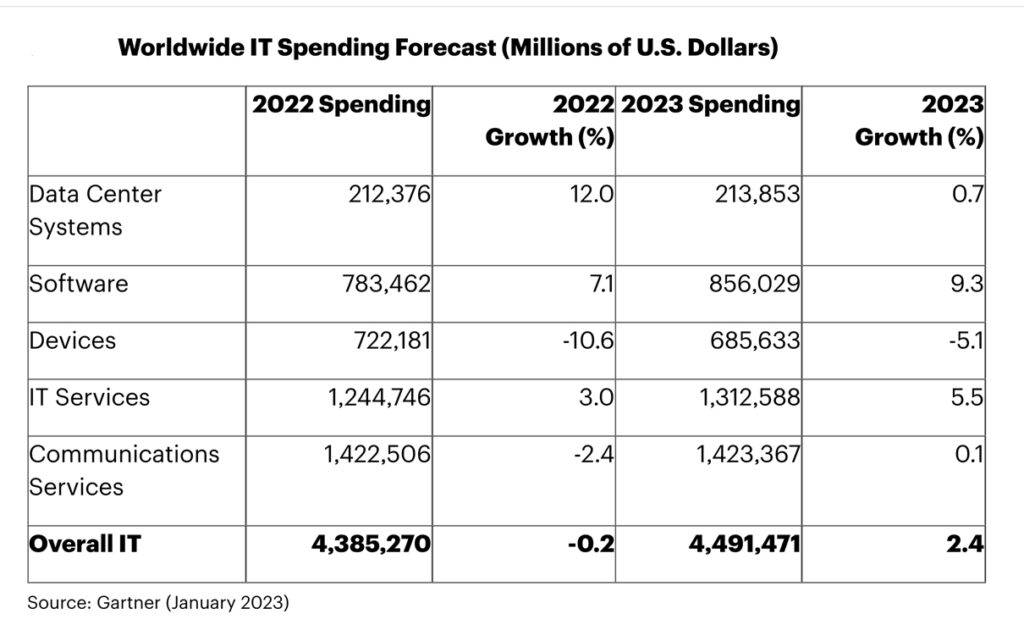
With all the daily pressures, it can be difficult for IT professionals to look too far into the future. It’s enough to track progress on current projects, deal with unexpected issues and keep the team on track with their responsibilities.
Nevertheless, it’s worthwhile for IT leaders to take an occasional break from the action and think about long-term trends that could affect their technology and personnel decisions in the next few years. To support that visioning process, Gartner recent published a report on the top trends impacting the IT sector through 2025 that reflect three main themes: businesses increasing their reliance on technology, new opportunities emerging through technology and the impact of external macro forces.
“The march of digitalization continues even amidst disruption,” said Rajesh Kandaswamy, distinguished VP analyst and Gartner Fellow. “In 2023, technology executives must balance short-term planning with long-term strategy to stay ahead of the immediate shocks to the economy and the underlying ‘permacrisis’ forces shaping business.”
Here are the trends Gartner identified that can impact enterprise IT professionals at least the next three years:
• Democratization of Technology. Non-IT workers will be empowered to seek out, select, implement and custom fit their own technology. Gartner predicts that by 2025, 55 percent of all successful emerging technology solutions will be delivered to “nontraditional” buyers – for example, outside IT – within enterprises, enabling vendors to expand into new markets and forge new customer relationships.
• Federated Enterprise Technology Buying. More buying decisions will be made by representatives across the business. In fact, just 26% of technology buyers in a recent Gartner survey reported that purchases are funded solely by IT.
• Product-Led Growth. Product-led growth (PLG) is a go-to-market strategy in which users experience value through free product offers or interactive or automated demonstrations. Then, users are either converted directly to paid accounts or their advocacy and influence helps to drive purchases. By 2025, 95% of software-as-a-service (SaaS) providers will employ a form of self-service PLG for new customer acquisition.
• Co-Innovation Ecosystems. This is an emerging practice that enables the convergence of internal, external, collaborative and co-creative ideas to create new value. Businesses are actively using technology to differentiate and succeed, so they are increasingly co-innovating with tech providers.
• Digital Marketplaces. Technology buyers are embracing digital marketplaces to easily find, procure, implement and integrate technology solutions. Non-tech buyers are also increasingly looking to marketplaces to meet their requirements for composable and easily consumable technology solutions.
• Intelligent Applications. Intelligent applications will create value and disrupt markets by learning, adapting and generating new ideas and outcomes. For example, generative AI can produce media content (including text, image, video and audio), synthetic data and models of physical objects.
• Metaverse Technologies. Gartner says these technologies are rapidly gaining traction in marketing for creating unique experiences, impactful interactions and novel engagement. By 2027, over 40% of large organizations worldwide will be using a combination of Web3, spatial computing and digital twins in metaverse-based projects aimed at increasing revenue.
Sustainable Business. In an increasingly technology-driven world, sustainable business is underpinned by sustainable technology. Technology providers must improve the sustainability of their products that enable sustainable business outcomes. A recent Gartner survey found that 42% of leaders are currently leveraging sustainability activities to drive innovation, differentiation and enterprise growth through sustainable products.
• Techno-nationalism. A trend away from globalization is markets to become increasingly local, impacting global technology ecosystems. Policy decisions are driving countries to implement of digital sovereignty regulations, causing a divergence of technology stacks. In response to this trend, IT leaders must balance meeting specific country-level localization needs with enterprise-level requirements.
While none of these trends call for immediate action, they should be considered by IT leaders taking a proactive approach to their organizations and their own careers.
